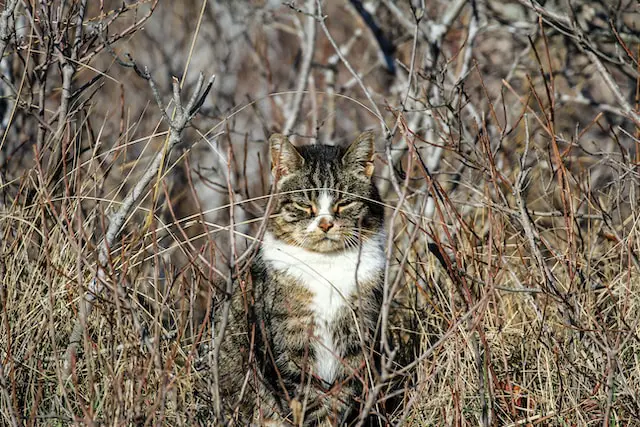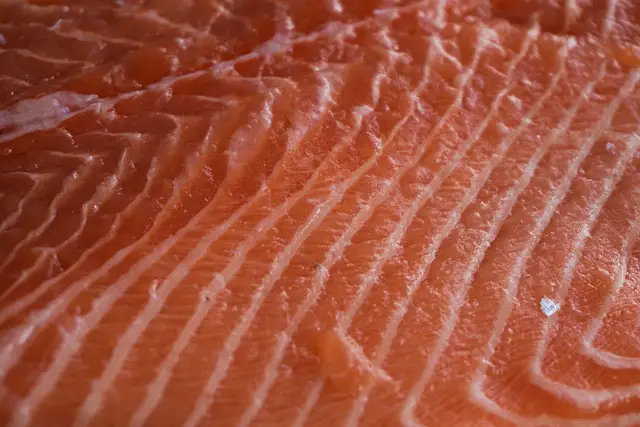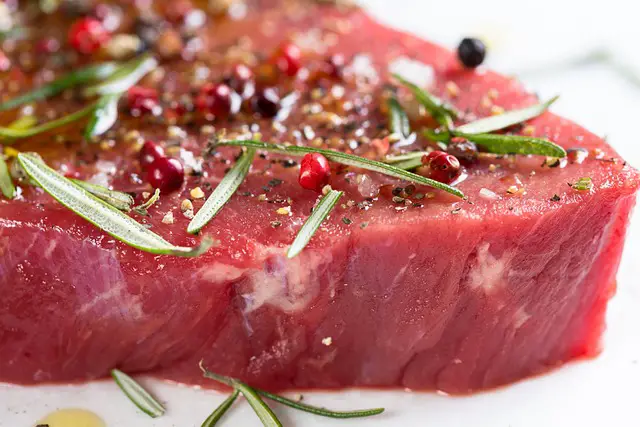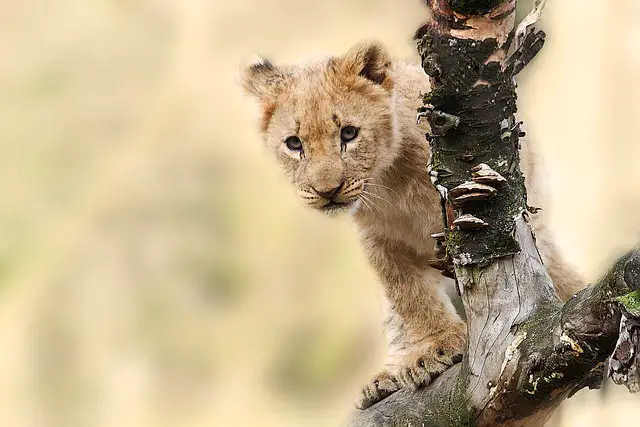Wild cats are fascinating creatures that have captured the attention of humans for centuries.
One of the many intriguing behaviors of wild cats is their tendency to knead.
Kneading is a rhythmic motion that wild cats make with their paws, similar to kneading dough. This behavior is often associated with domestic cats, but do wild cats also knead?
The answer is yes, wild cats do knead.
Kneading is a natural behavior in all feline species, from domestic cats to large wild cats like lions and tigers.
This behavior is believed to have originated in kittens, who knead their mother’s belly to stimulate milk production.
As they grow older, cats continue to knead to mark their territory and express comfort and contentment.
While kneading may seem like a simple behavior, it is pretty complex.
Cats use a variety of muscles in their paws and legs to create the kneading motion, and some cats even incorporate purring or vocalizations into their kneading behavior.
Understanding why wild cats knead can provide insight into their social behavior and help us appreciate these incredible animals better.
Understanding Kneading in Cats
Kneading is common in cats, pushing their paws in and out against a soft surface, like a blanket or a lap. It is often associated with contentment and relaxation, as cats knead when they feel comfortable and happy.
While kneading is most commonly associated with domestic cats, wild cats also exhibit this behavior. Kneading is thought to be an innate behavior in cats, meaning that it is something that they are born knowing how to do.
There are several theories as to why cats knead. One theory is that it is a leftover behavior from when they were kittens.
Kneading is a way for kittens to stimulate milk production in their mother when they are nursing. As they grow older, cats may continue to knead to comfort themselves.
Another theory is that kneading is a way for cats to mark their territory. Cats have scent glands in their paws, and kneading may be a way to leave their scent on a surface.
Regardless of the reason behind it, kneading is a common and harmless behavior in cats. If your cat kneads on you, it is a sign that they feel comfortable and safe around you. So, sit back, relax, and enjoy the kneading.
Wild Cats and Kneading Behavior
Wild cats, like their domestic counterparts, also exhibit kneading behavior. This instinct begins in kittenhood when they knead their mother’s belly to stimulate milk production. However, wild cats have different reasons for kneading as they grow older.
Lions
Lions are social animals that live in prides. They often knead each other as a sign of affection and to reinforce social bonds within the pride. It is also believed that kneading helps lions mark their territory with their scent glands on their paws.
Tigers
Tigers are solitary animals and do not have the same social bonds as lions. However, they still knead to mark their territory and stretch their muscles.
Leopards
Leopards are also solitary animals and use kneading behavior to mark their territory and to communicate with other leopards. They have scent glands on their paws to leave their mark on trees and other objects.
Cheetahs
Cheetahs are known for their speed, but they also exhibit kneading behavior. They use their paws to soften the ground before lying down and to mark their territory with their scent glands.
Jaguars
Jaguars are solitary animals that use kneading behavior to mark their territory and to communicate with other jaguars. They have scent glands on their paws to leave their mark on trees and other objects.
In conclusion, wild cats exhibit kneading behavior for various reasons, including marking their territory, communicating with other cats, and stretching their muscles. It is a natural and instinctive behavior common among all feline species.
Comparative Study: Domestic Cats vs Wild Cats
While domestic cats are known for their kneading behavior, it is unclear whether wild cats also exhibit this behavior. A comparative study investigated whether wild cats knead and how their kneading behavior differs from domestic cats.
The study focused on three species of wild cats: the African wildcat, the European wildcat, and the bobcat. The researchers observed these cats in their natural habitats and recorded their kneading behavior.
The study results showed that all three wild cats do knead, but their kneading behavior is different from that of domestic cats.
Wild cats tend to knead less frequently and with less intensity than domestic cats. They tend to knead on softer surfaces like grass or leaves, whereas domestic cats often knead on harder surfaces like carpets or furniture.
One possible explanation for these differences is that wild cats do not need to knead as much as domestic cats.
Domestic cats knead to mark their territory and to show affection, whereas wild cats have other ways of marking their territory and communicating with each other.
Overall, the comparative study suggests that while wild cats knead, their kneading behavior differs from that of domestic cats. Further research is needed to understand the reasons for these differences fully.
The Purpose of Kneading in Wild Cats
Kneading is common in domestic cats, but do wild cats also knead? The answer is yes! Wild cats, including lions, tigers, and leopards, also exhibit kneading behavior.
The purpose of kneading in wild cats is not entirely clear, but it is believed to serve several functions. One possible reason is that kneading helps to stimulate the mammary glands in female cats, which can help to increase milk production during nursing.
This is supported by the fact that kneading behavior is more commonly observed in female cats, both domestic and wild.
Another possible function of kneading is related to scent marking. Cats have scent glands in their paws, and kneading may help to spread their scent around their territory, marking it as their own.
This behavior may also help to communicate with other cats, as the scent left behind can convey information about the cat’s age, sex, and reproductive status.
Finally, kneading may be a way for cats to relax and feel comfortable. Cats often knead soft surfaces, such as blankets or pillows, while purring and showing other signs of contentment.
This behavior may be a way for cats to release tension and feel safe and secure in their environment.
Overall, while the exact purpose of kneading in wild cats is not fully understood, it is clear that this behavior serves essential functions in their lives.
Factors Influencing Kneading in Wild Cats
Kneading is a common behavior seen in domestic cats, but it is also observed in wild cats. While the reasons behind kneading are not fully understood, several factors may influence this behavior in wild cats.
Age
Young cats are more likely to knead than older cats. This behavior is believed to be a remnant of the kneading behavior seen in kittens, which helps stimulate milk production in their mothers.
Comfort
Kneading may also be a sign of comfort and relaxation in wild cats. This behavior is often seen when cats are resting or sleeping, which may help them feel more secure in their environment.
Territory Marking
Wild cats may also knead to mark their territory. This behavior helps them leave their scent on surfaces, which can warn other cats to stay away.
Reproductive Behavior
Kneading may also be linked to reproductive behavior in wild cats. This behavior is often seen in male cats during mating season, and it may help stimulate female cats to mate.
Overall, kneading is a complex behavior that is influenced by a variety of factors in wild cats. While the exact reasons behind this behavior are not fully understood, it is clear that kneading plays an essential role in these animals’ social and reproductive behavior.
Conclusion
In conclusion, wild cats do knead, just like domestic cats. This behavior is related to their kittenhood, as they knead their mother’s belly to stimulate milk production. However, wild cats may knead for other reasons, such as to mark their territory or to stretch their muscles.
While domestic cats often knead as a sign of affection, wild cats may not show this behavior similarly. They may knead on trees or other objects to mark their territory or to leave their scent behind.
Overall, kneading is a natural behavior for cats, whether wild or domestic. It is essential to understand the reasons behind this behavior and provide appropriate outlets, such as scratching posts or soft blankets. Doing so can help your cat feel happy and comfortable in their environment.
[su_box title=”Affiliate Disclosure”]This website is supported by its readers. Please assume that all links are affiliate links. If you make a purchase from one of the links we will make a commission from Amazon. Thank you.[/su_box]




